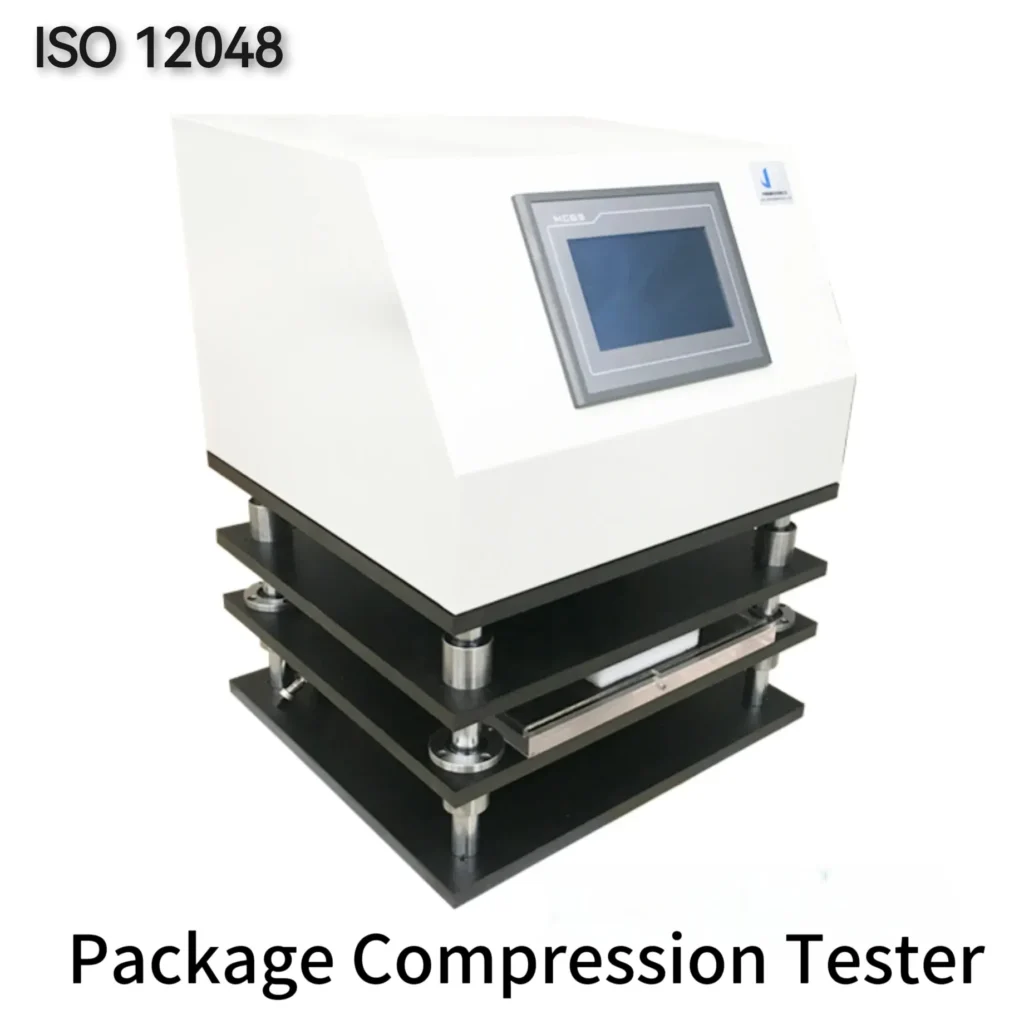Package Compression Test
The package compression test is a vital method used across packaging, pharmaceutical, and medical industries to evaluate the structural integrity of packaging materials. This test simulates real-world pressure conditions that packaging may encounter during transportation, stacking, or handling. It ensures that packaging does not rupture, deform, or fail under load—helping protect contents like medicines, food, or medical fluids.
At Cell Instruments, we understand that packaging performance isn’t just about appearance—it’s about strength, compliance, and safety. Our PCT-01 Package Compression Tester is purpose-built for high-precision, standard-compliant compression testing across diverse applications.
Test Standards and Industry Applications
TAPPI T804 and Other Standards
The TAPPI T804 standard is widely adopted for compression resistance testing of packaging containers. It provides detailed methods for assessing the maximum load a packaging item can endure before collapsing or showing structural failure. This standard is particularly relevant for paper-based containers, corrugated boxes, and flexible laminate pouches.
The package compression test also complements international testing protocols for packaging used in the medical and pharmaceutical sectors, including infusion bag packaging compression tests and pressure testing for pharmaceutical composite film bag packaging.
These testing procedures are crucial for verifying that packaging materials can endure external forces—especially in transit or in stacked storage conditions—without breaching, which could compromise sterility or dosage accuracy.
Pharmaceutical Composite Film Bag Packaging
Flexible composite film pouches used in pharmaceutical packaging require strict mechanical integrity. These pouches often contain sensitive liquids, powders, or tablets, making compression resistance a vital quality attribute.
Using the package compression test, manufacturers can:
Simulate transport-related pressures
Prevent leakage or contamination
Optimize film structure and lamination for better performance
Comply with regulatory guidelines for pharmaceutical composite film bag packaging
The PCT-01 system allows real-time tracking of the applied force, offering both maximum bursting force and constant pressure resistance testing modes.
Infusion Bag Packaging Compression Test
Infusion bags must maintain their form and sealing under various pressure scenarios—from automated filling to transit, storage, and even patient use. If a bag ruptures due to insufficient compression resistance, it could lead to medication leakage, patient risk, and costly recalls.
Performing a compression test on infusion bag packaging helps validate:
Structural robustness of multilayer film
Strength of heat-sealed seams
Integrity under static and dynamic pressure
The PCT-01 tester by Cell Instruments features pneumatic pressure application, an optional liquid collection device in case of rupture, and high-accuracy sensors—making it ideal for infusion bag packaging compression test validation.
Key Features
To perform accurate and reliable package compression testing, equipment must offer precision control and flexible test modes. The PCT-01 is designed with modern lab and production needs in mind.

Key Technical Benefits:
HMI Touch Screen Interface: Intuitive operation and real-time display
PLC Control System: Ensures industrial-grade consistency
Dual Modes: Maximum bursting force and constant pressure resistance
Auto Pressure Compensation: Maintains consistent loading throughout the test
Real-time Force Measurement: Delivers precise data with 1% FS accuracy
Customizable Platens and Sample Sizes
RS232 and Software Connectivity (optional)
Liquid Collection Feature: Prevents contamination during rupture events
With a test range up to 2000N, the PCT-01 is capable of handling various packaging types—from medical to consumer products.
Best Practices for Accurate Package Compression Testing
For optimal results during a package compression test, consider the following best practices:
Precondition samples at controlled temperature and humidity
Ensure even placement of the test item between platens
Select the correct test mode based on product type and use case
Use appropriate compression speed to simulate actual field conditions
Repeat tests across batches for statistical significance
Maintain calibration of the compression tester as per industry guidelines
These steps help ensure accurate insights into package resilience and protect product integrity throughout the supply chain.
Conclusion
In today’s performance-driven market, packaging must do more than look good—it must be strong, safe, and compliant. A well-executed package compression test verifies that packaging can withstand realistic pressure environments, particularly in high-stakes fields like pharmaceutical composite film bag packaging and infusion bag packaging.
At Cell Instruments, our commitment to quality and precision is reflected in the PCT-01 Package Compression Tester, a reliable tool trusted by professionals across medical, food, and industrial sectors.